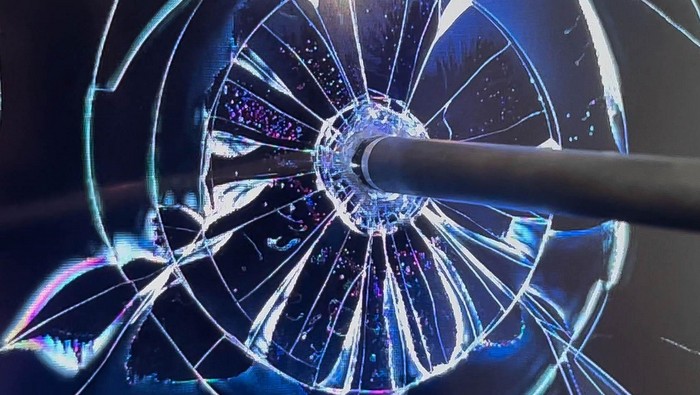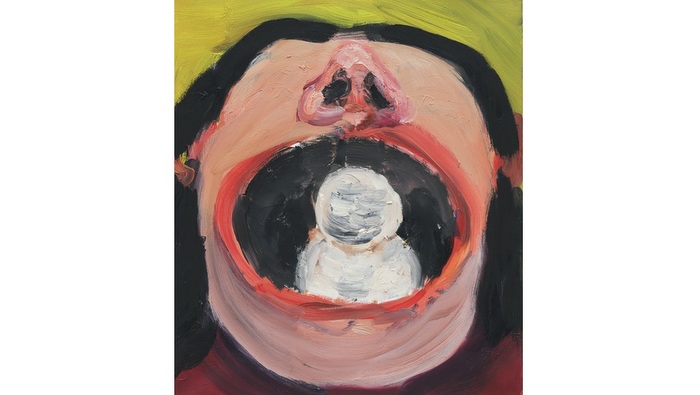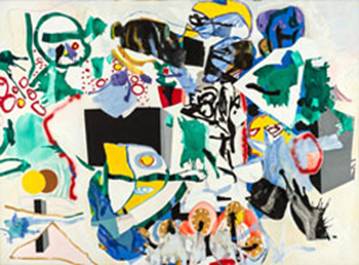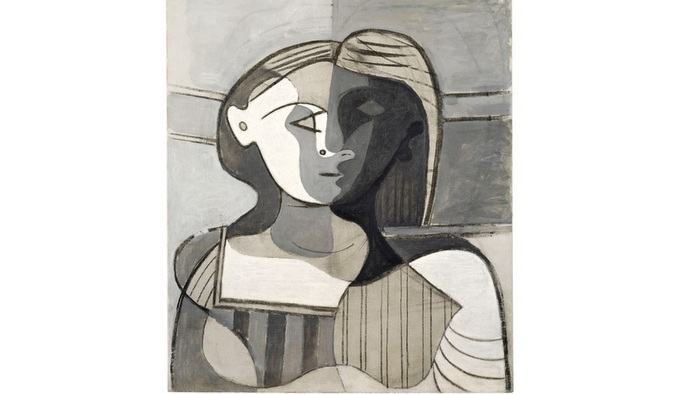Gregor Hiltner
Something abstract comes this way is Gregor Hiltner's latest batch of panel paintings, a title reminiscent of a quote from Shakespeare's drama Macbeth: 'Something wicked this way comes'.
Apparently out of nowhere, a universe emerges out of the sophisticated interplay of rules and chance. A universe in search of its own meaning, perhaps the meaning of our existence, says Gregor Hiltner. The rules that force chance into a system is what he old-fashioned calls composition theory.
Gregor Hiltner's passion has always been for painting. His work oscillates between the antagonisms such as solid shapes, the strictly architectural and the informal, or even between the narrative, sometimes even the figurative or the abstract. His work thrives on manifold changes with ever-new cycles. His very own signature remains unmistakably visual.
His works are reminiscent of creative chaos, coupled with geographical elements.
The tension in such abstract works is based on every viewer seeing things differently in it, and the latitude of interpretation for each viewer is unlimited.
His large format canvas works are inspired by Lyrical Abstraction, a style that came to Europe in the late 1940s.
Gregor Hiltner was born in 1950 in Nuremberg and studied at the Academy of Fine Arts in Munich.
Already in the beginning years of Michael Schultz Gallery, in 1989 and 1993, Gregor Hiltner's works were exhibited here.
Andy Denzler
In his fourth Berlin solo exhibition at the gallery of Michael Schultz, Swiss artist Andy Denzler shows a new overview of what has made his style of painting so well known: shattered figure representations, which largely elude the focused gaze since they are visually distorted.
Andy Denzler uses a significant and unmistakable alteration technique in his painting. He creates the sketchy layout of the painting with coarse brushstrokes, completely alla prima, and then subjects the canvas to a consistent surface treatment at the end of the actual painting process. Only by smudging the paint in mostly horizontal streaks, the actual motif is revealed. Even before the process of blurring, the artist plans the distortion and then the optical resurrection of the work in great detail.
As if in an optical time-lapse, the artist animates the surface with spatula and squeegee - thus creating movement and at the same time pauses our eyes as the picture stutters.
Denzler's painting traces the contradictions between appearance and reality, asks questions about truth and deception. He works with the image disturbances of the modern world and lets us feel with each view of his material-intensive, sensitive subjects that transmitters and receivers in today's WiFi worlds still need to have certain frequencies in common in order to understand each other.
Andy Denzler was born in Zurich in 1965, where he still lives and works today.
His works are represented in important collections, including the Denver Art Museum, the White Cube Collection in London, the White House in Washington DC, the Alison and Peter Klein Collection in Eberdingen-Nußdorf, the Museum Würth in Schwäbisch Hall, and most recently in the collection of the Kistefos Museum in Norway.
Related Publications

Leo Pum presents HYPER LIKE at HYPER HOUSE
December 18, 2025
Aargauer Kunsthaus. Klodin Erb. Curtain falls dog calls
December 17, 2025












